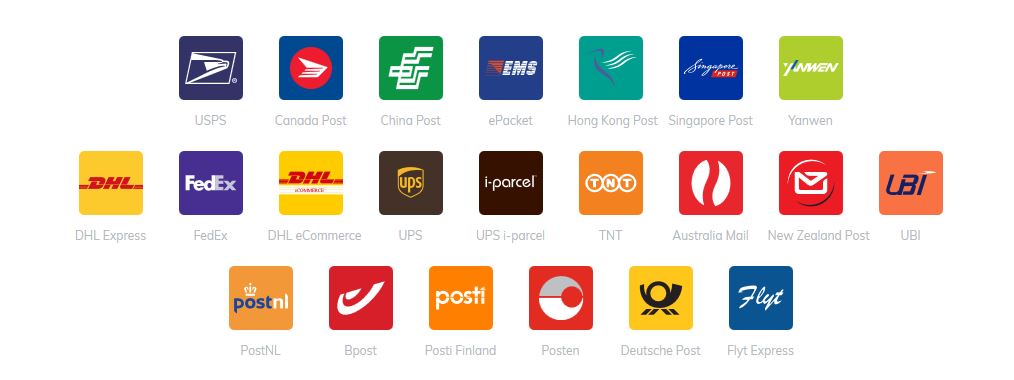Parcel Tracking
Are you tired of juggling different tracking sites for your deliveries? Introducing Parcel Tracking Info, your one-stop shop for tracking packages worldwide! No matter, if it’s speeding through the USPS network, bouncing around with UPS, or jet-setting with DHL, Parcel Tracking Info unifies them all. Enter your tracking number, click track, and voilà! You’ll see your precious cargo’s real-time location and estimated arrival, all in one convenient place. Forget the stress of switching between carriers; Parcel Tracking Info gives you the peace of mind and transparency you deserve, whether you’re an individual waiting for that special gift or a business managing multiple shipments. So ditch the tracking chaos and embrace the simplicity of Parcel Tracking Info – track smarter, track happier!
Parcel Tracking is the world’s most trusted website to track more than 1900 courier company parcels. PT also provides complementary solutions to courier tracking like support, transport Problems, Postal codes, PIN codes, etc.
How do I track a package?
On the Parcel Tracking website, you need the tracking number of any courier company. Enter your tracking number and click the track button; your live parcel location will be displayed on the screen.
To track a Parcel, enter your tracking number on this page and hit Track Package.
- Tracking Number. Find the waybill number on your package – this is your tracking number.
- Enter Tracking No. Use your tracking number in the panel at the top of this page. Click on the track button
- Location. Check where your package is right now.
What is a tracking number?
A tracking number is a unique identifier assigned to a package or shipment that allows you to track its progress from when it leaves the sender until it arrives at your doorstep. It’s like a personal ID card for your package, giving you peace of mind and transparency throughout the delivery journey.
Different Courier Company Tracking Number Formats
USPS Tracking Number Formats:- LZ158678252CN, 9114901075742452019146,
UPS Tracking Number Formats:- 1Z9R52E86804141860, 1Z589Y4Y0395085597
DHL Tracking Number Formats:-1Z9R52E86804141860
FedEx Tracking Number Formats:-1Z9R52E86804141860, 794666978391
DTDC Tracking Number Formats:-1Z9R52E86804141860
Universal Tracking Number Formats:-1Z9R52E86804141860
India Post Tracking Number Formats: –1Z9R52E86804141860
How to Track a Package Without a Tracking Number
Unfortunately, tracking a package without a tracking number is challenging but not entirely impossible. Here are some methods you can try, depending on the situation:
Contact the Sender:
- This is the most straightforward option. Contact the person or company that sent the package and inquire about the tracking number. They might need to include it or could provide details like the shipping date and service used, which can help narrow down the search.
Check Your Email:
- Shipping notifications or order confirmations often contain the tracking number in the body or subject line. Search your email for terms like “package,” “shipment,” “delivery,” or the sender’s name to see if you missed it.
Consult Receipts or Invoices:
- Physical receipts or invoices sometimes include the tracking number along with order details. Check all related documents you received when placing the order or upon purchase.
Contact the Delivery Company:
- Suppose you know the carrier (e.g., USPS, FedEx, UPS). In that case, you can contact their customer service with the recipient’s information (if applicable) and any details you remember about the package (size, contents, estimated delivery date). They can locate it using alternative methods, but success depends on their policies and available information.
Use Package Inquiry Services:
- Some websites and services claim to track packages without tracking numbers, often requiring details like sender, recipient, date shipped, and estimated delivery. However, their effectiveness varies greatly and might involve fees or limited success rates.
Check Delivery Status Updates:
- If the package is addressed to you, delivery services like USPS might offer “informed delivery” or similar features where you can preview upcoming deliveries based on your address. This requires prior enrollment with the service.
Social Media and Online Communities:
- If the package is part of a specific online purchase or involves a unique product, consider contacting communities or forums related to the sender or product. Someone might have received a similar package and shared the tracking number.
How to Find Tracking Number
Finding a tracking number can be frustrating if you need help finding where to look, but it’s usually readily available through various means. Here are some steps you can follow:
1. Check Communication from the Sender:
2. Contact the Sender:
3. Contact the Delivery Company:
4. Utilize Delivery Status Updates:
